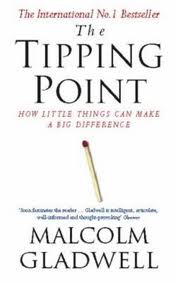A while back during one of our lectures, one of our tutors recommended us a book called ‘The Tipping Point‘ by Malcolm Gladwell.
This book is a great guidance for those who are studying marketing, psychology or business disciplines. If you are keen to learn how to influence potential customers, then this book works wonders. The good news is The Tipping Point does not only contain theory, but is filled with very clear examples from real life.
Gladwell defines a tipping point as “the moment of critical mass, the threshold, the boiling point”. The book seeks to explain and describe the “mysterious” sociological changes that mark everyday life. As Gladwell states, “Ideas and products and messages and behaviors spread like viruses do”
Let’s take a look at the book in more detail and see the “rules of epidemics“:
The law of the few
Firstly, I would like to talk about our regular life, especially when we are about to make a decision. This could be a decision to visit a new West End play, to stay in a particular hotel when you go abroad, to buy a new computer or anything else. Just think about the moment when you are about to make that particular decision. I guarantee you that everyone will think of a person who is an expert in any given subject when it comes to making a decision. And when you make your decision you will make the same recommendation to your other friends. Congratulations! You are part of the epidemic of buzz! However, the person who recommends something to you starts this epidemic while you are only one of its participants. Do you want to change this? Read the book!
Secondly, I would like to talk about a particular situation when you like someone’s shoes/dress/mobile phone or anything else and you want to have the same thing. Yes, when you caught someone’s idea and want to have it in your life you are again a participant of epidemic. Do you want to know how did you get there?
The Power of Context
Thirdly, I would like to talk about the situation when we can change our behaviour due to the external circumstances. For example, if the street is dirty, windows are broken and walls are covered with graffiti we are more likely to break the law (even insignificantly) rather than if the street is clean, windows are glazed and walls are well painted. Interesting, isn’t it? So read the book to find out more!
I would like to recommend this book to everyone who wants to broaden his/her horizons and find out more about our nature and how to use it in every day and professional life!
